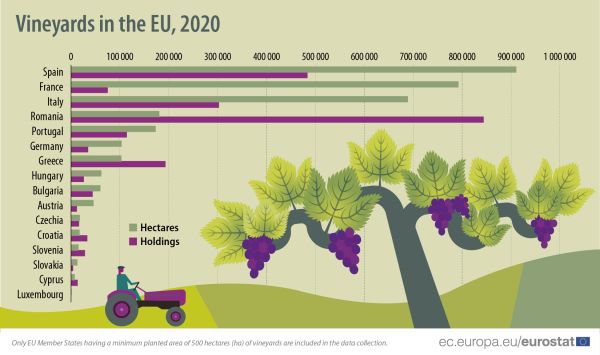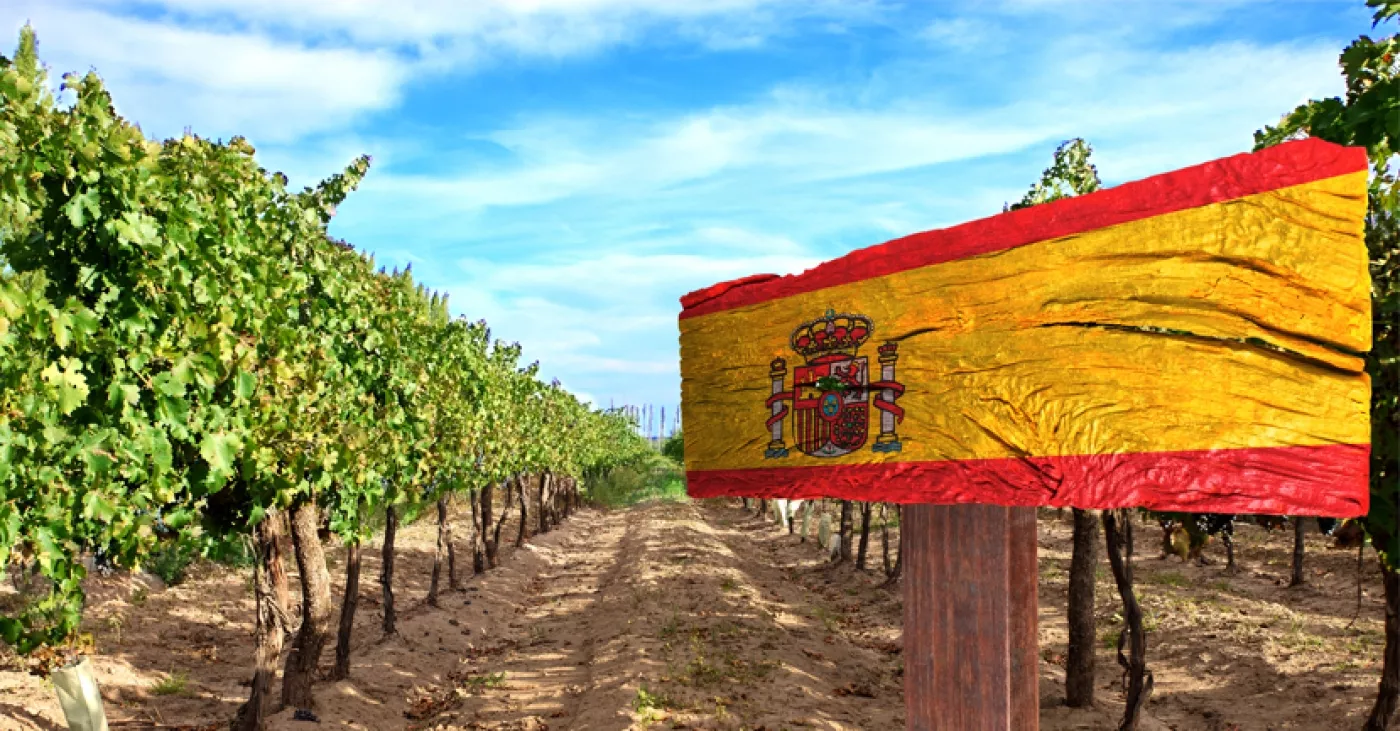(Editor’s note: Along with France and Italy, Spain is one of Europe’s Big Three wine producers, which together account for about 75 percent of the continent’s production. Spain is the world’s second-largest exporter behind Italy. You can read more data about wine production here on the Eurostat website.)

Spain, like many southern European countries, is a wine drinking nation. Even kids are allowed the occasional sip. But, as wine expert Luis from the fabulous Bodega Rivera in Torrevieja on the Costa Blanca where I live explained to me, Spaniards like a good, cold beer, too, especially in the hot summer months.
For those who are not beer lovers but wine fans, there is an abundance of choice in Spain, from white to red, rose and the ever popular cava. Once you are familiar with the finer details of Spanish wines that we will explain to you here, and have maybe gone on one or the other wine tour, you will have a new appreciation for this huge industry, estimated to be worth about $10.7 in 2021.
You can of course visit a bodega like Rivera to learn about the many varieties, but, visiting the different regions where the vineyards are is much more fun. So is tasting the caldo which is another Spanish word for wine, in situ.
The wine regions of Spain
There are an astonishing 69 DOSs (Designations of Origin) in Spain and that includes the Canary and Balearic Islands. But then, Spain is a large country with a variety of soil and climate, nearly all of which is favorable for the growing and cultivation of an equally large variety of wines.
It was the Ancient Romans who brought viticulture to Spain. Rioja – maybe the most internationally known – is by far not the oldest. That honor goes to 2,000-years-old vineyards in Ribeiro/Galicia in the Northwest of Spain, bordering the Atlantic but protected by mountains from strong winds.
Galicia’s sandy soil and plentiful rainfall favor vegetation and the fresh white wines that come from the Treixadura grape, which is the most widely planted there. You’ll find 5 DOSs alone in Galicia, with Albariño, a white wine, the star of the Rías Baixas, one of the 5 DOSs.
Here are some of the other wine regions:
• Cataluña – Penedes (Cava) Rioja (Red). This is the most prestigious region of Spain, located in the north, just one hour from Bilbao. The capital is Logroño, famous for something very different: The seat of the Spanish Inquisition and cruel auto-da-fés.
But back to the more enjoyable subject of wine.
Red, red it is here and Tinto El Coto is the most expensive brand I saw in the Bodega Rivera. Tinto, by the way. is what the Spanish call red wine. There are about 500 vineyards in Rioja. Tempranillo is a favorite dark purple grape which brings the flavor of violets and raspberries to the wines.
• Andalucía, Jerez and Malaga: Best known for the fortified wine Sherry.
• Valencia – Utiel Requena: The low lying area between Valencia and Alicante has a very long
tradition of winemaking. A favorite is muscatel.
• Castilla Leon – Ribera del Duero, not to be confused with Galicia. This is red wine Castilla Leaon
is located at the central Spanish plateau, bordering La Rioja and Portugal. Red wines rule here, among them Ribera del Duero.
There are far fewer whites, made from the Verdejo and Viura grapes.
• Lanzarote is a volcanic island in the Atlantic. The wines are here planted individually in mini-craters to protect them from the strong ocean winds. The most famous is Malvasia, semi sweet .
• The island of Tenerife also has five wine regions, one of them being the Orotava Valley.
The varieties of wines and fortified wines
Everybody knows what reds, whites and roses are , so let’s talk about cava. This is Spain’s equivalent
of Champagne, produced mostly as a sparkling white wine but also as a sparkling rosé.
No celebration of any kind is held in Spain without cava and it’s extremely popular at Christmas and New Year. Luis told me, that French Champagne is difficult to come by at the moment because the Chinese and Japanese are buying up all the French supplies. But then, the Spaniards don’t need to; they have their own excellent supplies at a much lower price, with the most famous brands being Codorniu and Freixenet, all produced in Penedes/Cataluña.
The region is located on the south of Cataluña between the coastal mountain range and the Mediterranean, The biggest cities nearby are Barcelona, Garraf and Tarragona. The wines produced are primarily cava, but also some dry reds and whites.
Next there are the dessert wines: Sherry from Cadiz and Jerez in Andalucía and the sweet Malaga wines. Sherry in Spain is also called Fino and it comes in various strengths and flavors from the bodegas in Jerez de la Frontera and Cadiz.
Come summer, we have to know about two popular Spanish summer drinks that you will see
on the menus of every bar and restaurants – Tinto de Verano and Sangria. They are not wines per see, but mixers.
Tinto de Verano (or “Summer Red” in English) is simply red wine diluted with mineral water or gaseosa, the Spanish equivalent of soda, mostly sweet and added to taste, sometimes with ice cubes.
Sangria is a much more potent and alcoholic option. Take a big pitcher, cut up apples, oranges or peaches, sugar and stir. Add a bottle of any red wine, fresh orange juice and a generous slug of rum or brandy. Stir again. Let soak a bit, then add ice cubes and chill.
And a tip: In Spain, wine is not only sold in bottles. You can bring your own (empty) and fill up from huge barrels in the shops. Even supermarkets offer that service.
As you can see there is a lot of territory to cover if you want to get to know Spanish wines. To help you plan, there are many organized wine tours available and here are a few that cover the
most popular regions and provide you with wine tastings as well as interesting sight seeing.
The Wine Tours
• Penedes
• Rioja
Tour prices vary wildly, so check out ratings and reviews to find the one that works for you.
Cheers, just don’t overdo it and be careful with the sangria.
–––––––––––
Read more about wine here in Dispatches’ archives.
Inka Piegsa-Quischotte is an international attorney-turned-travel and lifestyle writer based in Spain. She has contributed to BBC/Travel, several in-flight magazines, TripSavvy (Spain) and TravelAwaits among many other publications.














